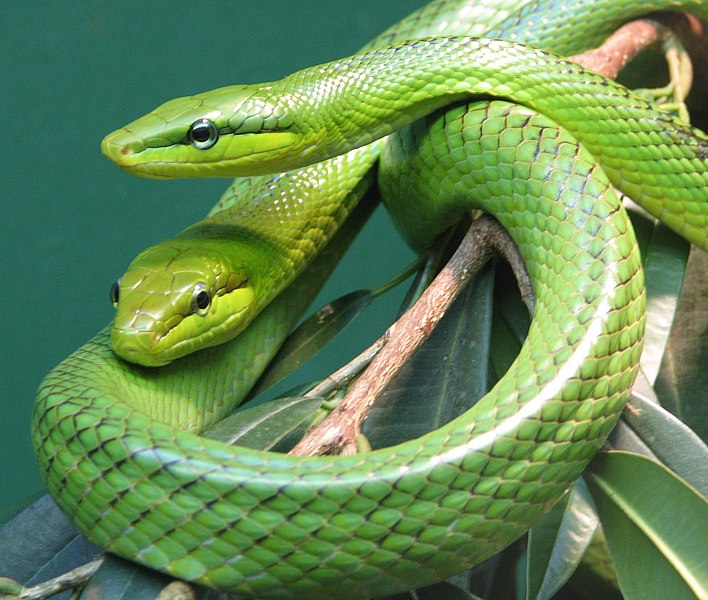I frequently promote the use of canned insects as a means of providing a balanced, varied diet to amphibian and reptile pets…in my experience, very little is as important as this one factor. Free living reptiles and amphibians consume dozens, and in some cases hundreds, of prey species, and rarely fare well on a captive diet consisting of 2-3 types of insects.
Canned invertebrates are convenient…some people even rely on them in place of readily available insects such as crickets and mealworms. However, their true value lies in providing us an opportunity to add difficult-to-obtain food animals to our pets’ diets. Other canned species that are valuable in this regard include grasshoppers, snails and fresh water shrimp.
Insect traps, such as the Zoo Med Bug Napper will also assist you in adding a variety of species to your insectivorous pets’ diets.
Feeding Tongs – Plastic vs. Metal
When looking at the video, please note how hard the frog strikes the insect…this is common, and a very good reason to use Zoo Med Plastic Feeding Tongs with these ravenous little fellows. Metal tongs, which can injure delicate mouth tissues, are best reserved for pets which feed gingerly or take large food items.
Green and Bronze Frogs as Pets
Green frogs are wonderful but over-looked terrarium pets. The normal seasonal changes throughout most of the USA are sufficient to spark breeding, even among animals housed indoors, and their colors are quite attractive and variable.
Populations living south of the Carolinas have been classified as a distinct subspecies, and are popularly known as bronze frogs (Rana c. clamitans). The individual pictured here is part of a group I established for a new amphibian exhibit at the Maritime Aquarium in Connecticut.
Green frogs also do well in outdoor ponds (please see photo), but be sure to introduce tadpoles if your pond is unfenced – adults that are relocated often attempt to return to their home territories.
Video #2 – Small Frog vs. Large Finger
The second video shows a yearling green frog attempting to swallow my finger. This animal was received as a tadpole (as was the adult, now 3 years old), mixed in with a shipment of feeder minnows. Although amphibians are thought to operate largely upon instinct, learning, as you can see, plays a role as well… my hand should send this frog diving for cover. Interestingly, those captive-raised frogs that I have placed into outdoor ponds quickly regain their “common sense” and become difficult to approach.
Further Reading
Please see my article Providing a Balanced Diet to Reptile and Amphibian Pets for further information.
 That Reptile Blog – Reptile, Amphibian and Exotic Pet Care and Information
That Reptile Blog – Reptile, Amphibian and Exotic Pet Care and Information

 My first contact with the strikingly marked red-tailed ratsnake came many years ago, when they were rarely seen in the pet trade. It was a wild caught adult and showed up, unexpected, in an order sent to an animal importer for whom I worked at the time. She would eat only birds, which, fortunately for her, were in good supply (bird imports in those years were not well managed, and shipping-related deaths were all too common).
My first contact with the strikingly marked red-tailed ratsnake came many years ago, when they were rarely seen in the pet trade. It was a wild caught adult and showed up, unexpected, in an order sent to an animal importer for whom I worked at the time. She would eat only birds, which, fortunately for her, were in good supply (bird imports in those years were not well managed, and shipping-related deaths were all too common). Iridescent coloration is exhibited many snakes, but in none is it as spectacular as that featured by the rainbow boa (Epicrates cenchria cenchria). The “glow”, of its brilliant coloration, caused by microscopic scale ridges that refract sunlight, have long made this species a pet trade favorite.
Iridescent coloration is exhibited many snakes, but in none is it as spectacular as that featured by the rainbow boa (Epicrates cenchria cenchria). The “glow”, of its brilliant coloration, caused by microscopic scale ridges that refract sunlight, have long made this species a pet trade favorite. Chameleon fanciers are indeed fortunate that the chameleon best suited for captivity, the veiled or concave-casqued chameleon (Chamaeleo calyptratus) is also among the most beautiful and interesting of the group (it is also pathologically anti-social, but so are most of its relatives!). Turquoise, emerald green, yellow and tan, each in many shades, all find a place in this lizard’s repertoire of color changes. Male veiled chameleons approach 2 feet in length while females top out at about 14 inches.
Chameleon fanciers are indeed fortunate that the chameleon best suited for captivity, the veiled or concave-casqued chameleon (Chamaeleo calyptratus) is also among the most beautiful and interesting of the group (it is also pathologically anti-social, but so are most of its relatives!). Turquoise, emerald green, yellow and tan, each in many shades, all find a place in this lizard’s repertoire of color changes. Male veiled chameleons approach 2 feet in length while females top out at about 14 inches.